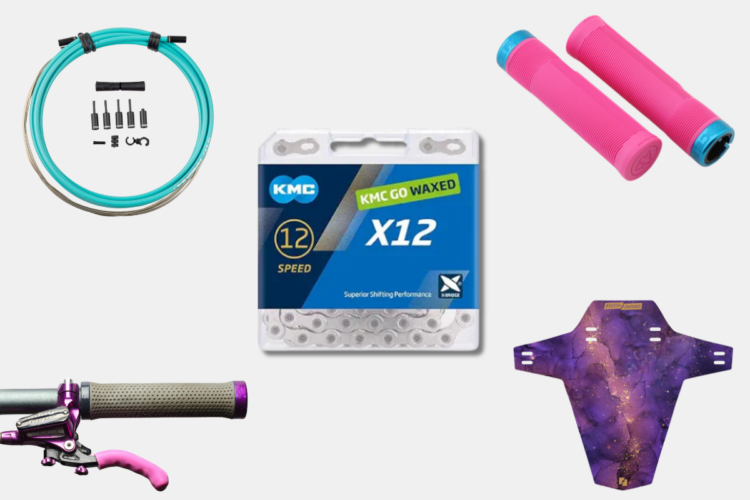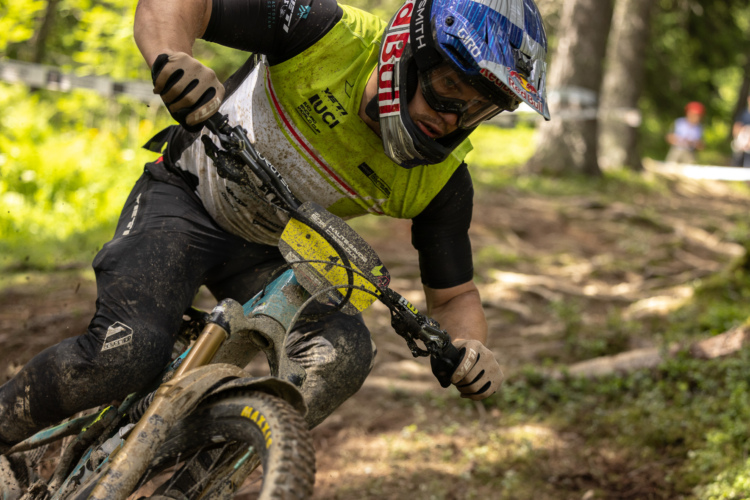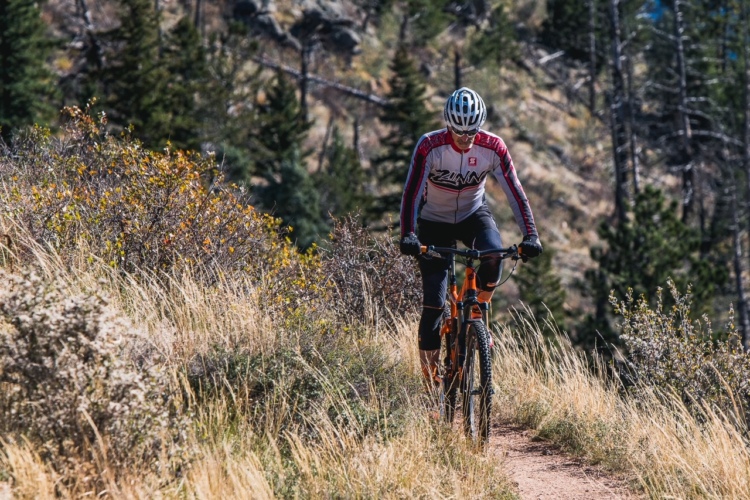 You finally got that new fat bike you’ve been drooling over. You rode it around the neighborhood and dialed in the fit. You geared up with every item that 45NRTH carries, and you’re ready to hit a trail.
You finally got that new fat bike you’ve been drooling over. You rode it around the neighborhood and dialed in the fit. You geared up with every item that 45NRTH carries, and you’re ready to hit a trail.
Suddenly, you realize that your brand-new fat bike doesn’t even remotely fit on your current bike rack. Then you further realize that putting it inside the car all slushy and gross is not really a viable option either.
Now what?
The guys at 1UP USA have you covered!
Based in Wisconsin, where they have liked fat bikes since before they were cool, 1UP already had one of the simplest, sturdiest tray mount bike racks on the market. Due to the way their rack is designed, all that was required to adapt it to fat bikes was the addition of some spacers and a wider tire cradle. The fat tire adapter is available as an add-on for a previously-purchased hitch or roof-mounted rack, or a new rack can be ordered already converted.
The 1UP rack comes in two configurations: hitch mount and roof mount. The overall function is the same and the basic hardware is similar, however the trays are drilled differently for each application. I tested the $189.00 Quik Rack Roof Tray.
Out of the Box
The rack comes ready to mount and includes the necessary hardware for attaching to a variety of bars, including Thule, Yakima, or various factory bars. There are no published instructions, but 30 seconds of inspection reveals the path to installation.
For security, 1UP uses “security bolts” on the mounting hardware, and they include the necessary star wrench to install them. These interface with some standard stainless steel carriage bolts available at any hardware store, which is a good thing as the ones that came with my kit were waaaaay too long. (I spoke with 1UP about this and they said they are working on their online ordering form so that they can get cross bar info from buyers and therefore include the correct bolts.) However, after a trip to the store for some shorter bolts, I was good to go.

The machined metal bars that engage the bolts are heavy, solid, and awesome. With a little elbow grease, I think this hardware combo could actually crush my Thule bars. (I was careful not to.)
Installation
Mounting the 1UP on the car is ridiculously easy. Lay the tray on the cross bars. Slide the four carriage bolts into the slot under the tray. Position the clamp bar. Thread the security nuts and tighten them with the included tool.
That’s it. Really!
Usage
With the rack installed, it’s time to load up a fatty! The 1UP secures bikes by the tires with a pair of swing arms. To get started, before picking up the bike, trip the release lever with one hand, and open the swing arm. Do this for the front and back. I tend to open the back to approximately where it will end up, and then open the front all the way. This way, when the bike is lifted into place, it can roll back into the rear arm, leaving a hand free to pull in the front arm. The locking mechanism is ratcheting, so there is no need to hold the lever when closing the arms, only for opening them.
Make sure the tires are centered in the arms (they should be automatically), give each lever a final tug to make sure it’s secure, and you’re done! Your fat bike is now securely loaded and ready to go to the trailhead!

Note that while the rack is secured to the vehicle with the security bolts, there is no inherent method for locking the bike to the rack. You will need a cable or chain lock.
Out on the road, this rack holds my bike very securely. Judging by shadows and some furtive glances out the moonroof, it is substantially more stable than my Thule BigMouth trays, even with the Fatback versus my daughter’s lighter 26er Giant Trance.
Around town driving, navigating curbs, dirt roads, even highway speeds… nothing phases this rack.
Gripes
My only real issue with the 1UP rack is that it rattles. I mean it rattles! When I hit bumps, when I’m idling at a stop, when I look at it funny: BZZZZZZZZZZZZZ. If I get the engine RPM’s just right, it sounds exactly like a Chris King rear hub. True Story.
Fortunately, I was able to isolate the source of the noise pretty easily, and $1.99 for some small, felt stick-on pads at the craft store solved the issue completely.
Good Stuff
I’ve already mentioned how simple and stable this rack is–but wait, there’s more! Even with the adapter installed for fat bike use, guess what: it can still accommodate a regular bike! That’s right, one rack for pretty much any bike in your quiver. To be fair, I think a 26er would require unbolting and lowering the cross piece, but I have tested it with a 29er and a 650b, and they both fit just as easily and securely as the fat bike.
When not in use, the arms that secure the bike by its wheels fold flat, and the whole thing is nicely low-profile. I noticed on both my car and my wife’s that wind noise is reduced in comparison to my Thule trays.
On that note, this rack is also a cinch to transfer between vehicles. Loosen the bolts, remove one of them from each bracket, transfer, and tighten. It barely took longer to do it than it did to describe it!

Bottom Line
This rack works and it works well. My fat bike is held more securely than it is in my Thule tray mount, and there is also no contact with any painted bike surfaces. Installation and usage are a breeze, and the tray’s low profile when not in use is also nice. While it’s not exactly optimal to have to go get bolts and felt pads to complete an installation, the good still outweighs the bad by a long shot.
If you already have a 1UP tray system, the fat bike adapter is $34. If you’re purchasing new, let them know up front and they’ll ship it already converted.
Whether you go with the roof mount, or the $299-and-up modular hitch mount, you’ll be securely hauling your fatty in no time with 1UP.
Thanks to 1UP USA for sending over the fatty roof rack for review!













2 Comments
Feb 12, 2014
Feb 12, 2014